In Arabic, verb conjugation is the process of how verbs are derived from a set of base letters (usually 3) and how they change in the different tenses to reflect gender, plurality, voice, and other aspects.
The Conjugation Table
When conjugating verbs in Arabic, what should be kept in mind are the following 3 aspects of the subject (i.e. the one doing the verb):
- person (third, second, and first): The third person is used when you are talking about the subject and the subject is not present, the second person is used when you are addressing the subject, and the first person is used when you yourself are the subject.
- gender (masculine and feminine)
- plurality (singular, dual, and plural)
Arabic uses all three persons and it uses the masculine and feminine genders with no neutral. Furthermore, plurality in Arabic is of three types: singular, dual, and plural. Dual indicates on two entities and plural indicates on three or more entities.
- فعل (Verb) : کام کو کہتے ہیں
- فاعل (Subject) : کام کرنے والے کو کہتے ہیں
- فعل ماضی (Past Tense) : گزرے ہوئے زمانے کو کہتے ہیں
- امر (Imperative) :جس میں کام کرنے کاحکم دیا گیا ہو
- منفی (Negative) : کام کے نہ ہونے کو کہتے ہیں
- فعل معروف (Active Voice) :ایسا فعل جس میں ہمیں کام کرنے والا معلوم ہو
- فعل مجہول (Passive Voice) : ایسا فعل جس میں ہمیں کام کرنے والا معلوم نہ ہو
The Past Tense Verb
The first conjugation of the past tense verb is achieved by placing a given set of base letters on the pattern فَعَلَ, فَعِلَ, or فَعُلَ. For the duration of this tutorial, we will not concern ourselves with these three variations, how they work, and why they exist; that will be discussed in a later tutorial. For now, we assume that taking a set of base letters and placing them on the pattern فَعَلَ will give us the first conjugation of the verb in the past tense.
Let’s use the root letters ن، ص، ر which afford the meaning of “helping”. The word نَصَرَ, then, means “he helped”.
Download PDF Here
Past Indefinite Verb Conjugations
Past Indefinite Tense | Positive | Passive Voice
An active past tense verb is rendered passive by using the following algorithm.
- the last letter is left alone
- the second last letter is given aكسرة
- all other vowels are changed toضمة
So نَصَرَ, for example, would become نُصِرَ. The resulting verb is conjugated in the exact same way as studied above. A small point to note here is that, in the beginning of this tutorial, mention was made of the fact that the past tense verb may be on one of three patterns. It is important to note that, despite which of those three a verb will use, the passive will always be constructed in the same way; the passive verbs from all three of those patterns look exactly the same.
Past Indefinite Tense | Negative | Active Voice
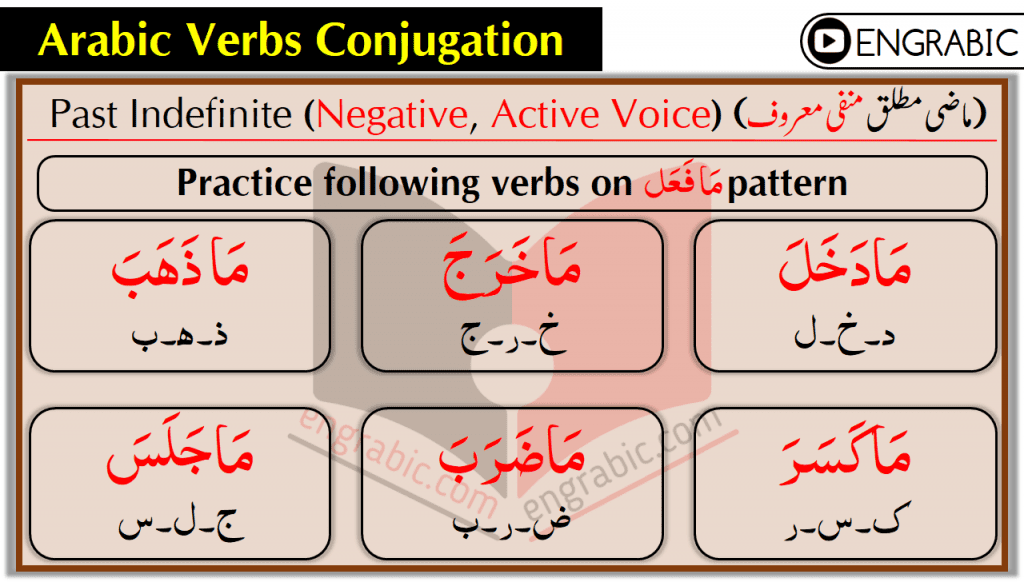


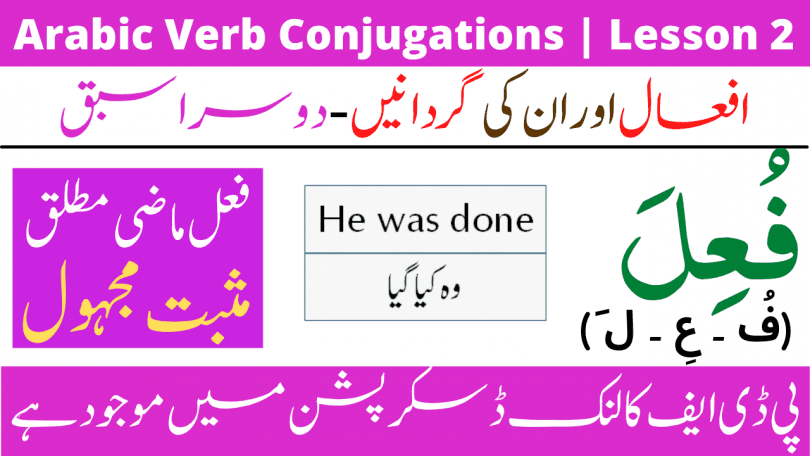
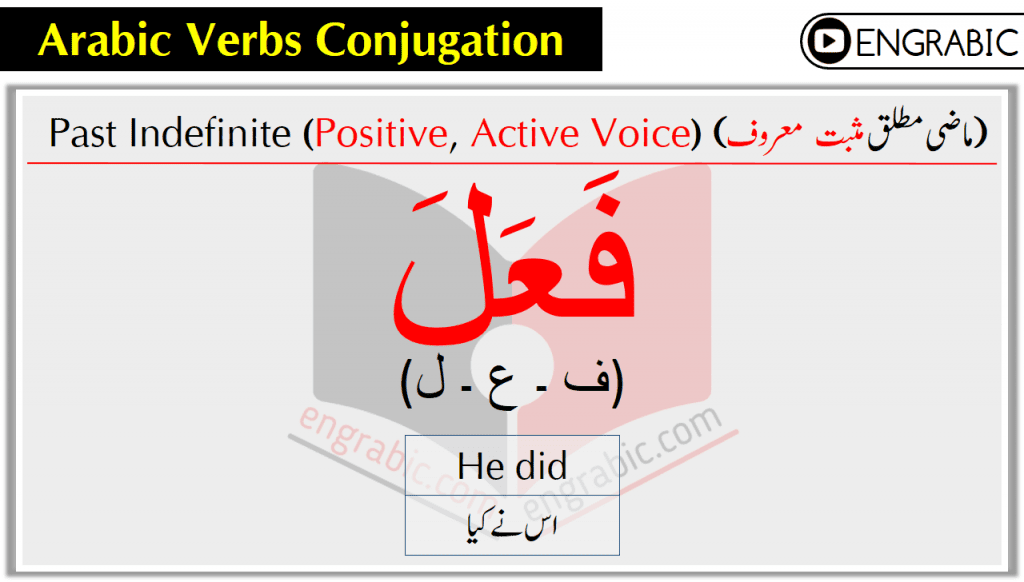
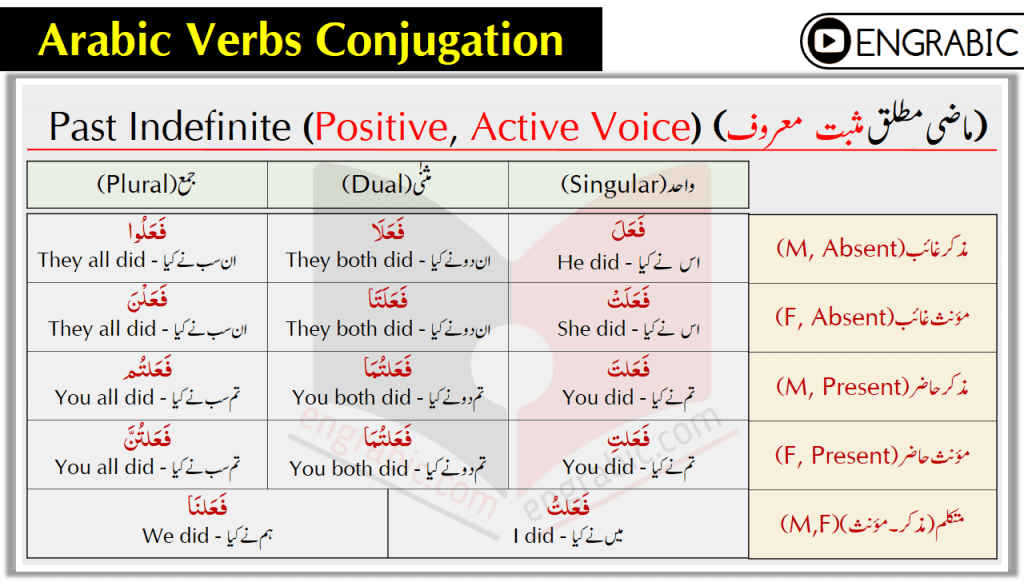
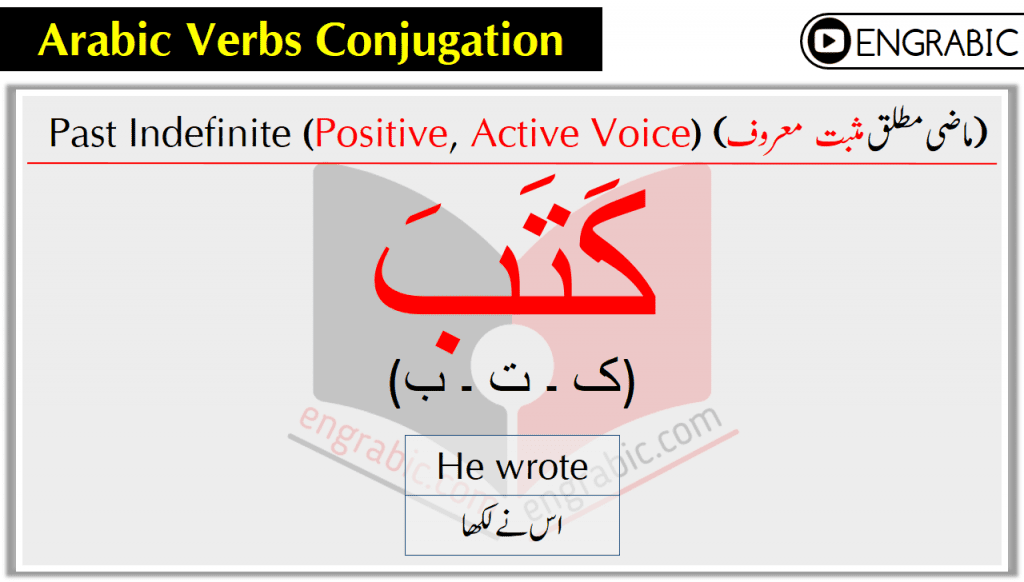
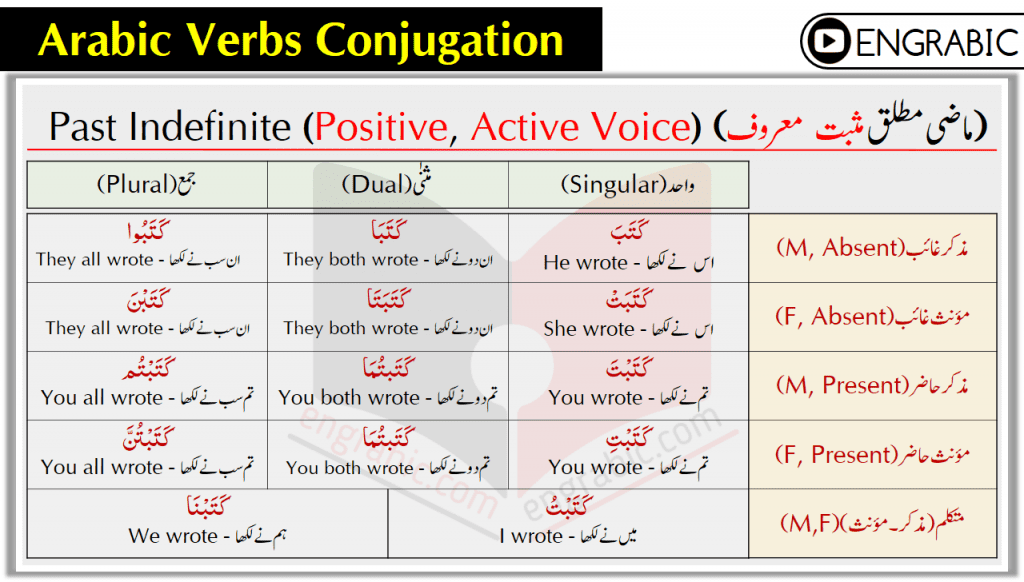
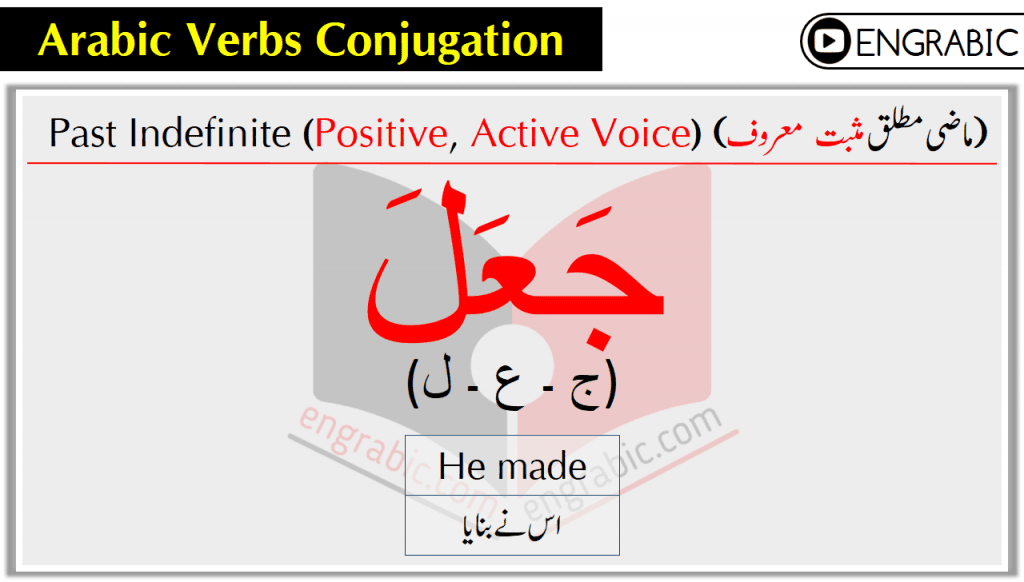
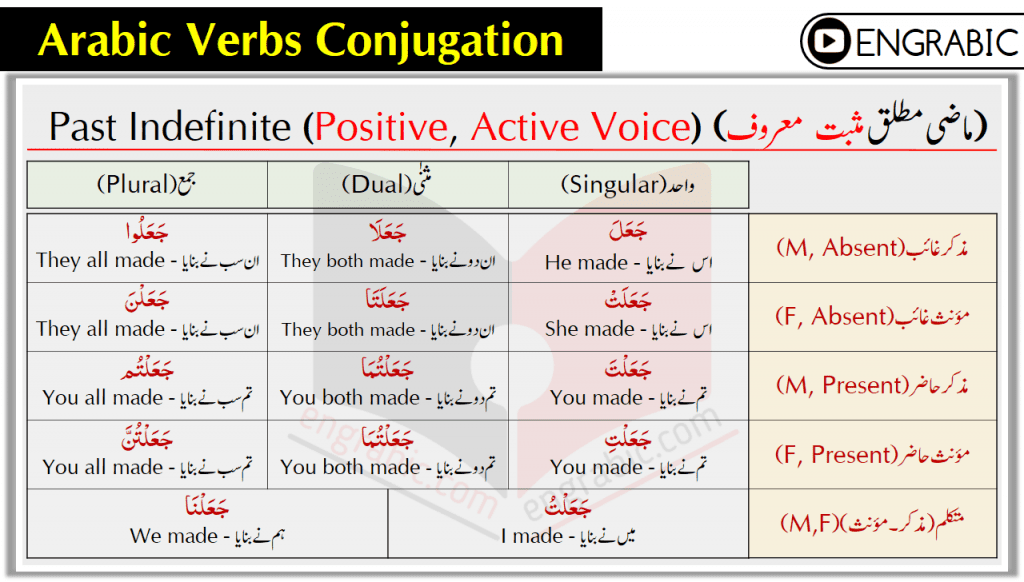
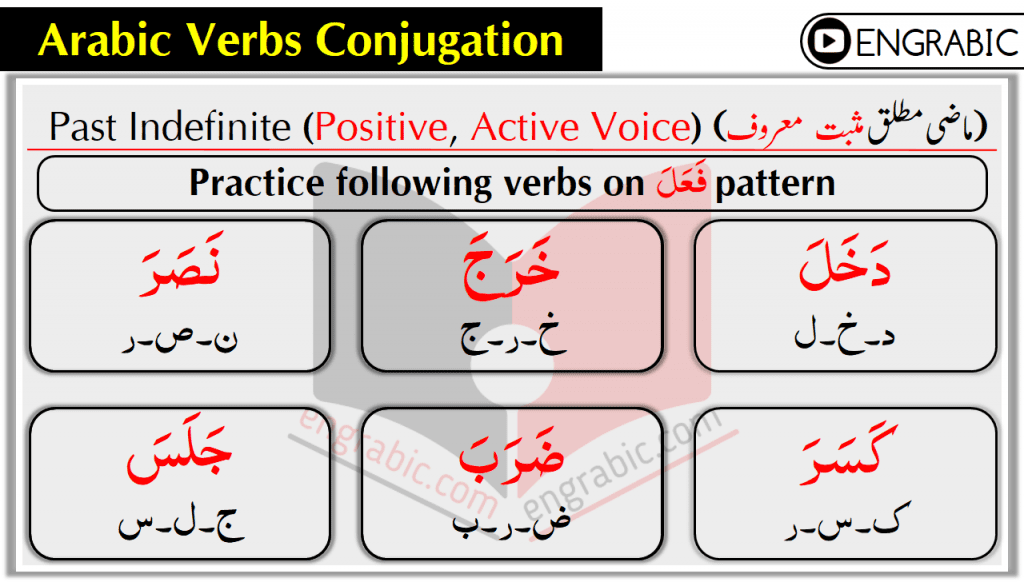
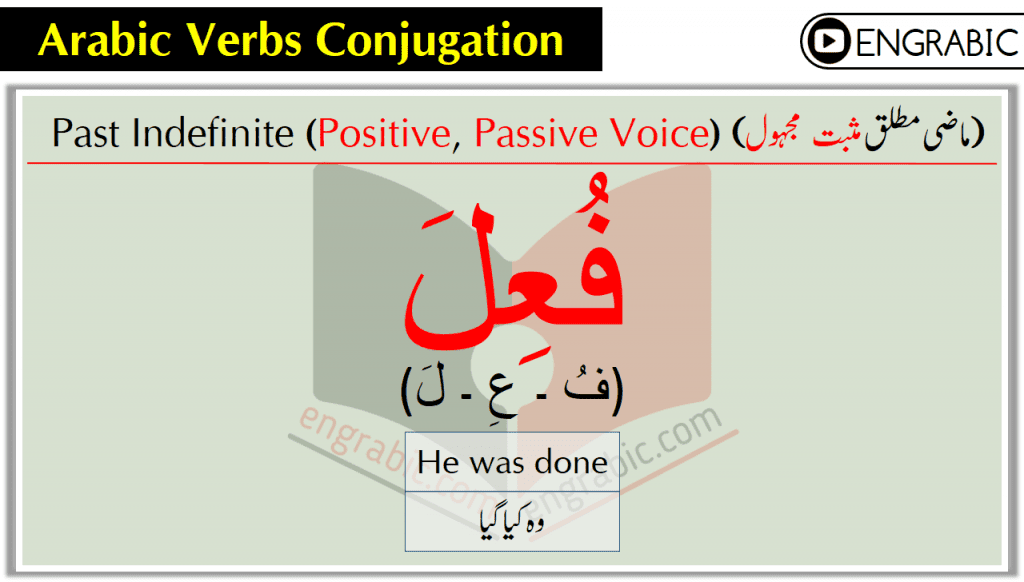
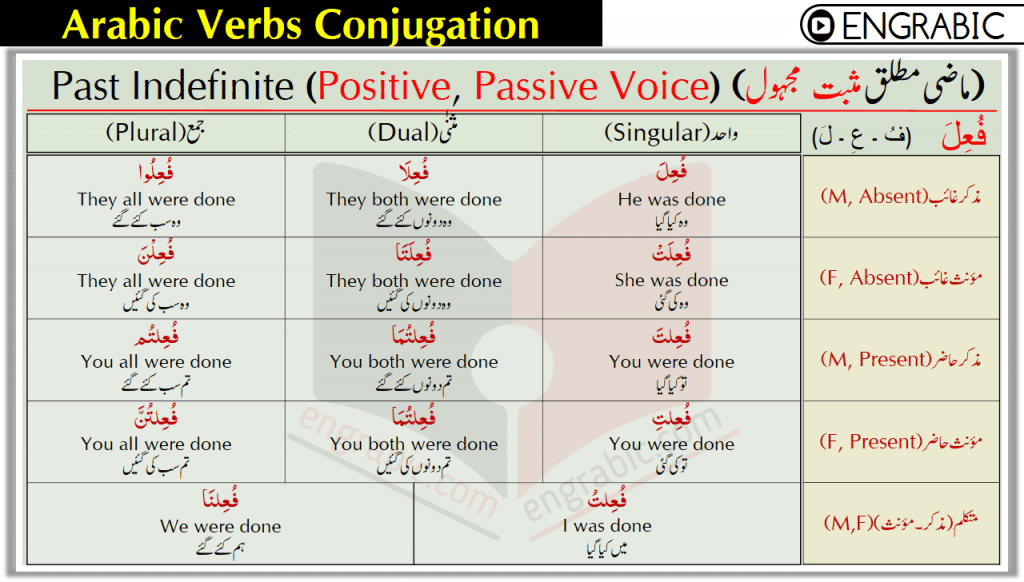
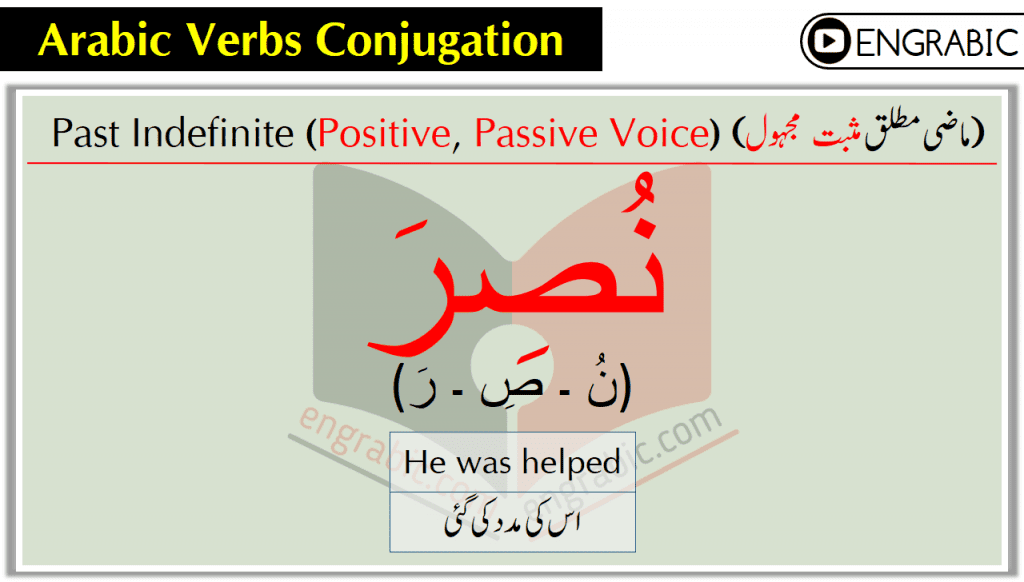
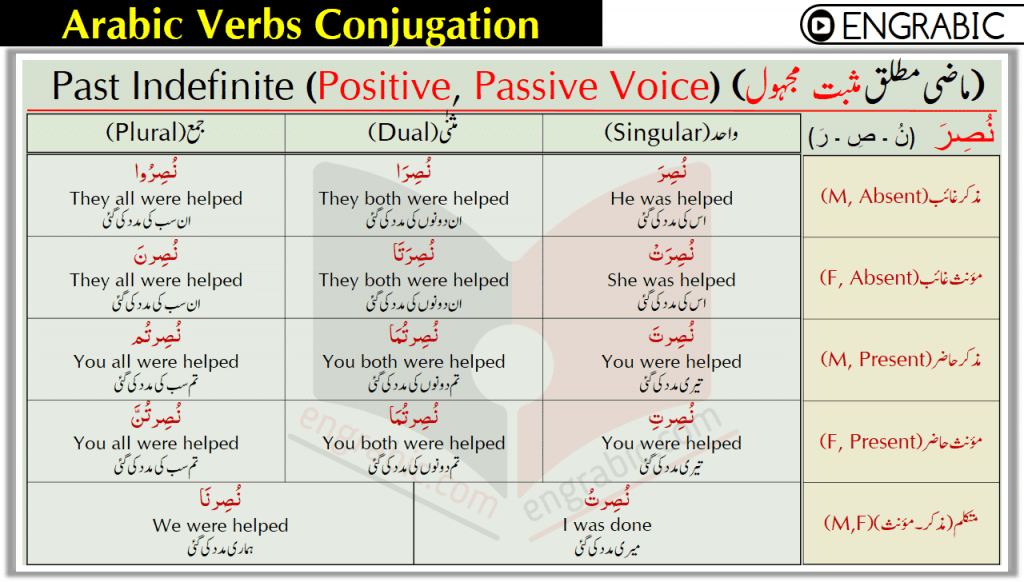
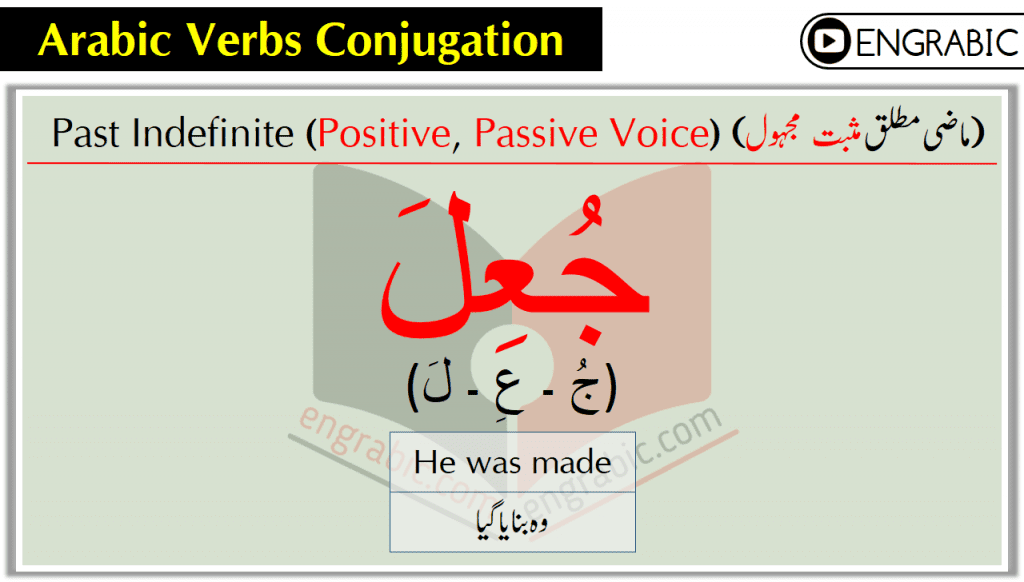
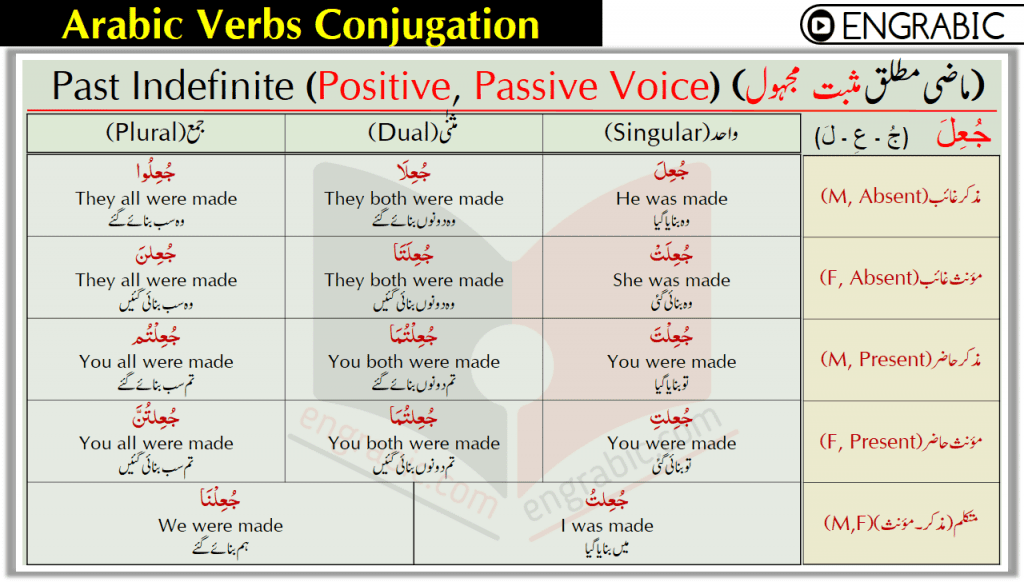
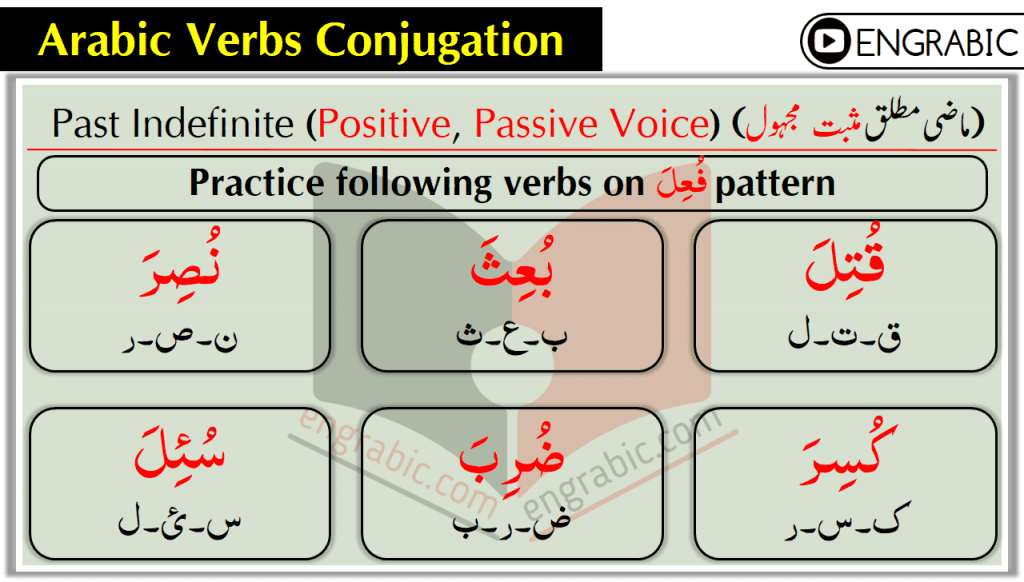
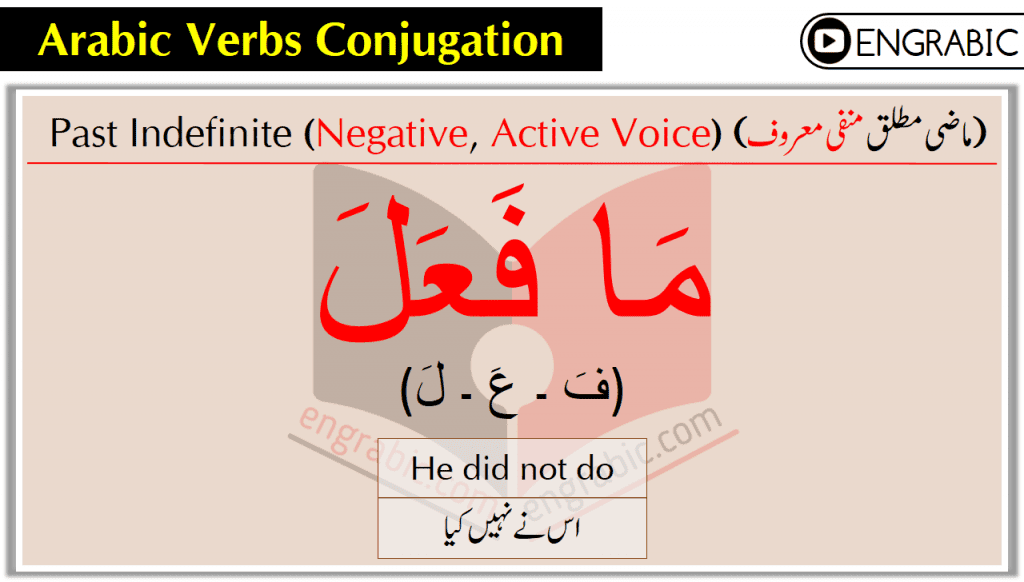
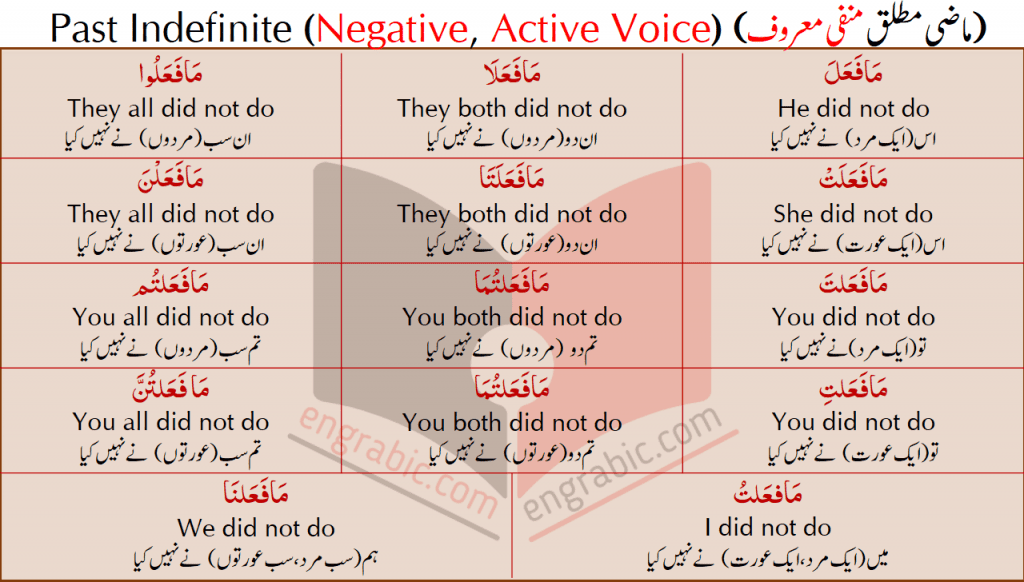
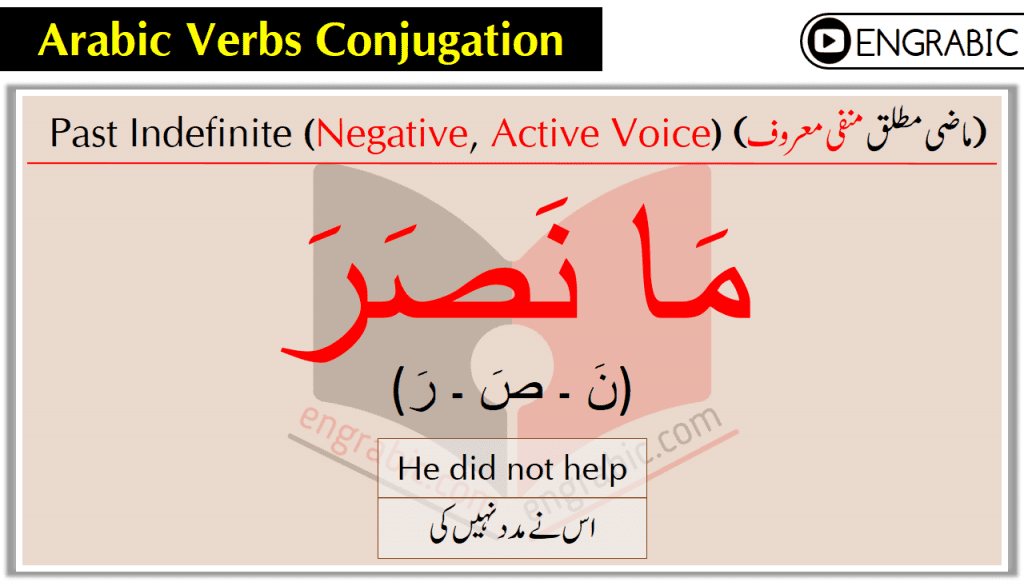
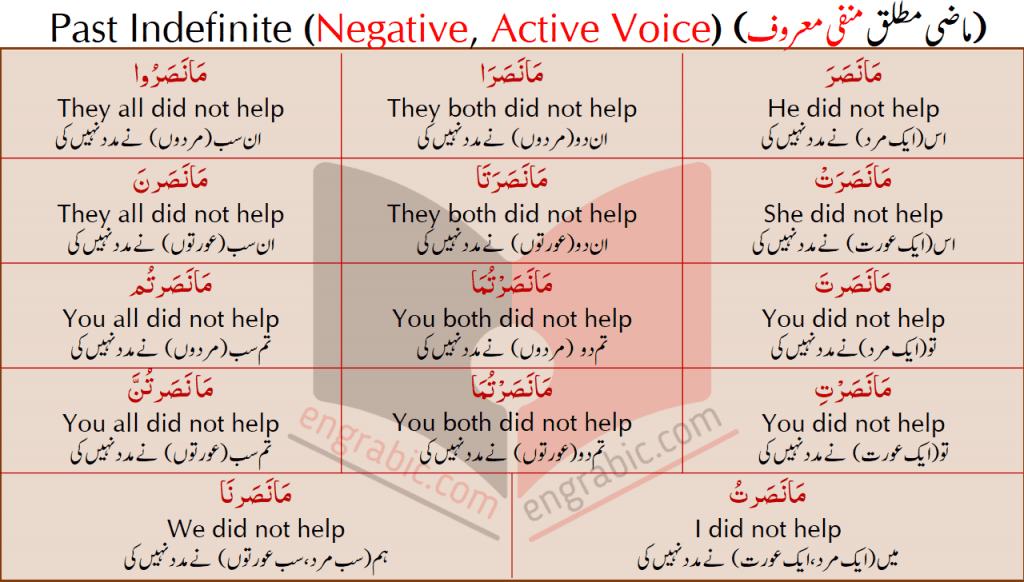
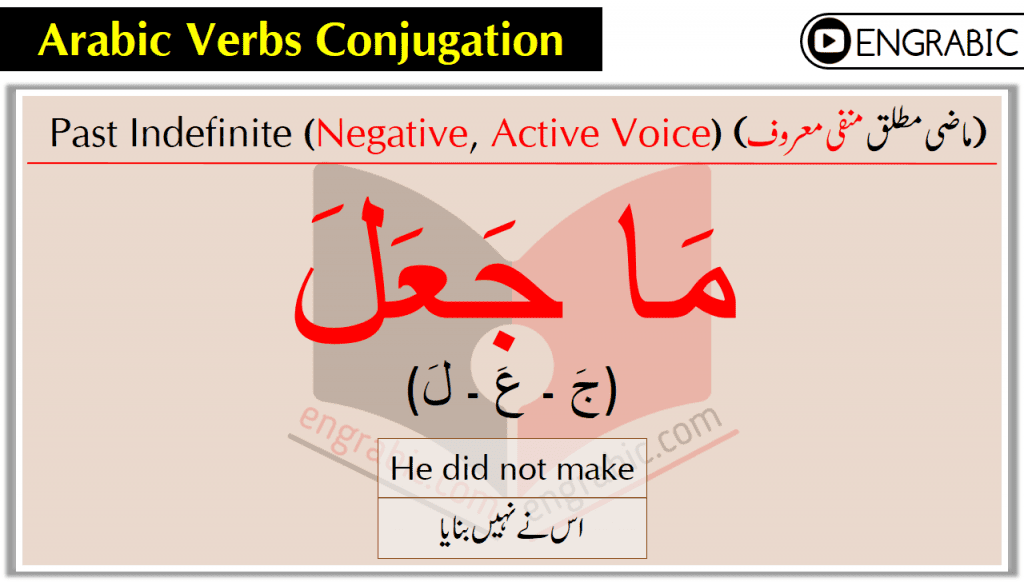
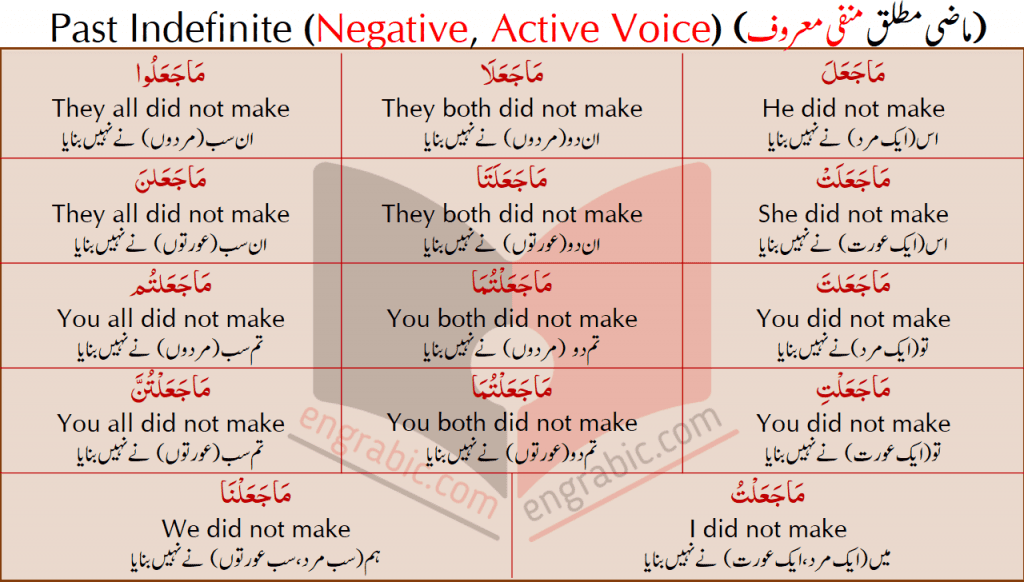
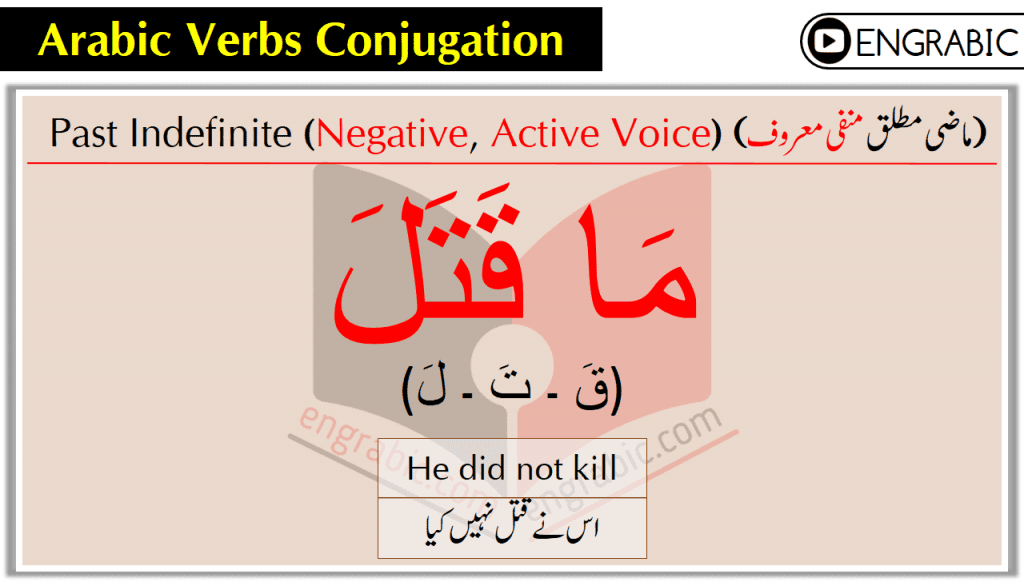
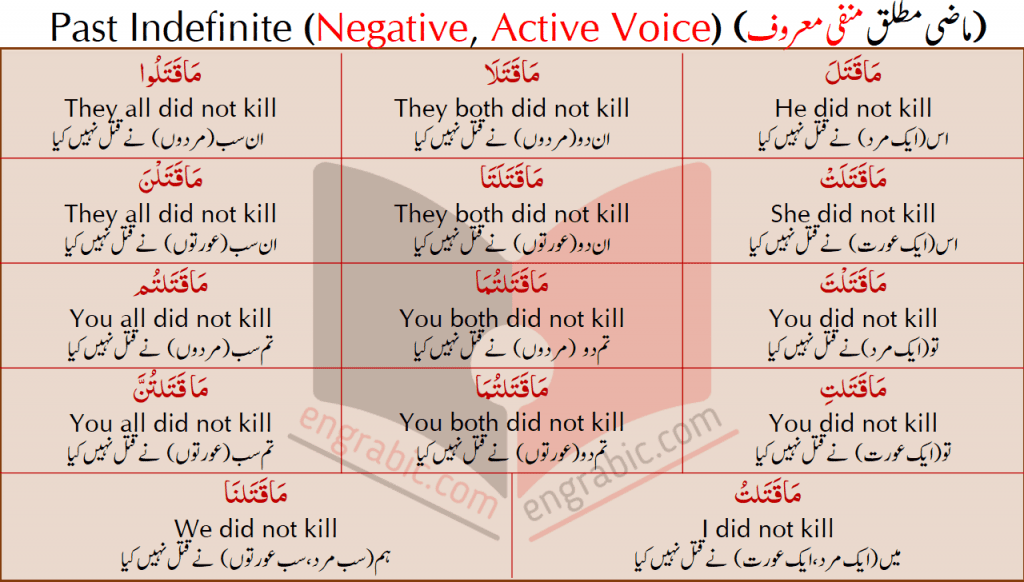

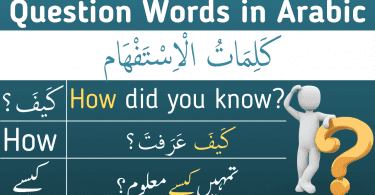

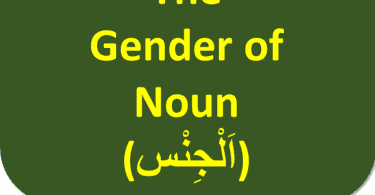
Leave a Comment